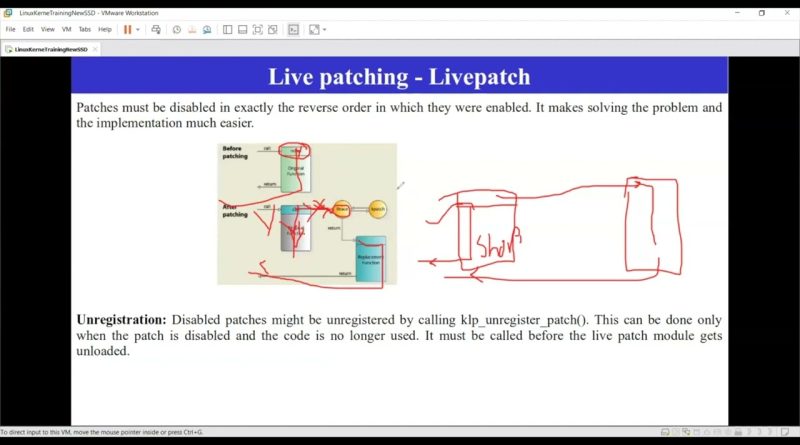What is Linux kernel live patching? | How to enable live kernel patching on Linux | Livepatch
What is Linux kernel live patching? | How to enable live kernel patching on Linux | Livepatch
🔧 Understanding Live Patching in the Linux Kernel 🐧
Live patching is an essential feature in Linux systems, enabling the application of updates and security patches to a running kernel without requiring a reboot. This ensures uninterrupted system uptime, crucial for high-availability environments.
🚀 What is Live Patching?
Live patching involves applying updates to a running Linux kernel without stopping it. This is critical for maintaining system security and performance while avoiding disruptions caused by reboots.
📋 Steps to Implement Live Patching
🔗 Register the Kernel Live Patch Module:
Before applying patches, register the live patch module with the kernel to prepare the system for changes.
🛠️ Enable the Live Patching Feature:
Activate the patch by enabling live patching. This redirects execution to the updated functions instead of the original ones.
❌ Disable and Unregister Patching:
You can disable live patching to revert to the original functions. To remove the patch, unregister it to clean up the system.
🧩 How Live Patching Works
When a patch is applied, it is registered but not immediately active. The registration sets up the environment for the patch. The patch becomes active once enabled, rerouting calls to the new functions.
For instance, registering a patch makes it visible in /sys/kernel/livepatch/. The kernel continues using the old functions until the patch is enabled. Enabling the patch redirects the system to the new functionality.
⚙️ Mechanism of Live Patching
Live patching uses technical steps to switch between old and new functions seamlessly:
⛔ NOP Instruction: The kernel uses a ‘NOP’ (No Operation) instruction before critical functions, allowing changes to be introduced without immediate effect.
🔀 Function Redirection: Upon enabling live patching, the system replaces the NOP with a jump to the new function, bypassing the old code.
Disabling the patch reverts the kernel to its original state, executing the old functions. You can also remove the patch if it’s no longer needed.
🌟 Benefits and 🚩 Drawbacks of Live Patching
Advantages:
🕒 Zero Downtime: Eliminates the need for system downtime, crucial for continuously available systems.
🔒 Immediate Security Updates: Allows immediate application of security patches, ensuring prompt vulnerability resolution.
Disadvantages:
📈 Increased Kernel Size: The kernel may become larger, leading to slight performance overhead.
🔍 Traceable Functions Required: Live patching relies on functions marked for tracing. Unmarked functions can’t be patched, limiting live patching’s scope.
🛠️ Tools for Live Patching
Several tools support live patching in Linux, including:
🌐 KernelCare: Provides automatic live patching across multiple Linux distributions.
🖥️ kGraft: Developed by SUSE for live patching.
🔧 kpatch: Used by Red Hat for live kernel patching.
☁️ Ksplice: Supports live patching on Oracle Linux.
These tools use mechanisms like kprobes and ftrace for live patching.
✨ Conclusion
Live patching is a vital technique for maintaining secure and stable Linux systems without requiring reboots. By understanding and utilizing live patching tools, administrators can ensure continuous system availability.
Linux kernel live patching is a way to apply critical and important security patches to a running Linux kernel, without the need to reboot or interrupt runtime.
There is a difference between a patch and an update. An update is a new, more minor version of a package and it can contain bug fixes, performance improvements, new features, edits at the command line, and other enhancements. A patch is a partial snippet of code (usually the differing output between two versions of a package or file) that fixes a vulnerability in the existing version. These patches fix vulnerabilities without latency so that the existing implementation can run more securely and system administrators can hold off on rebooting until the next regular maintenance window.
In theory, live patching could be used for any patch for the running kernel, including regular bug fixes and enhancements. In practice, the priority function for live patching has been major security vulnerabilities, since these are fixes that shouldn’t be delayed.
20240107 -2 Deep dive into live patching HD 1080p
by Linux Kernel Foundation
linux foundation



